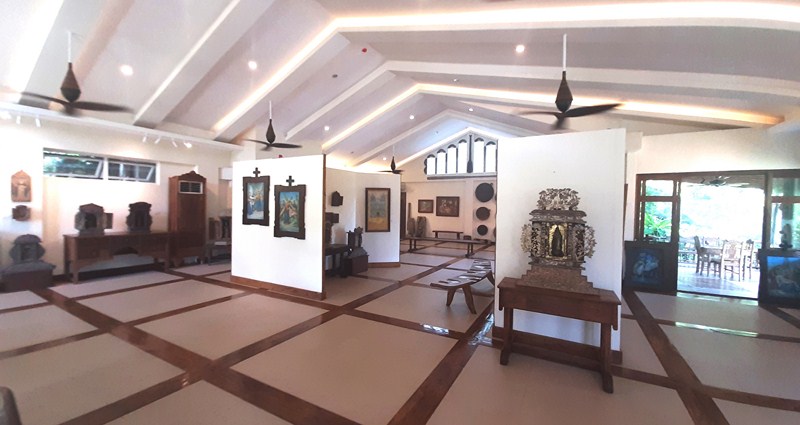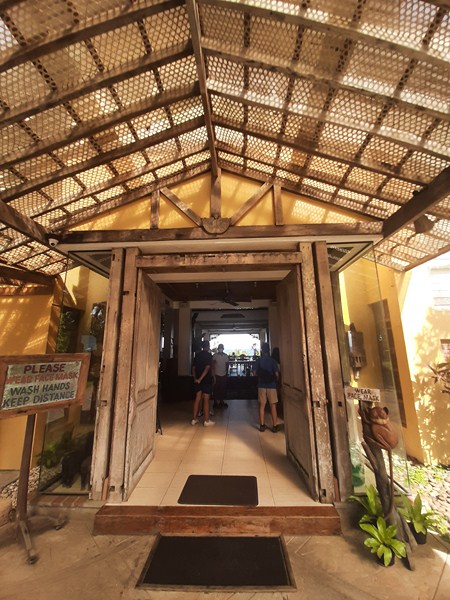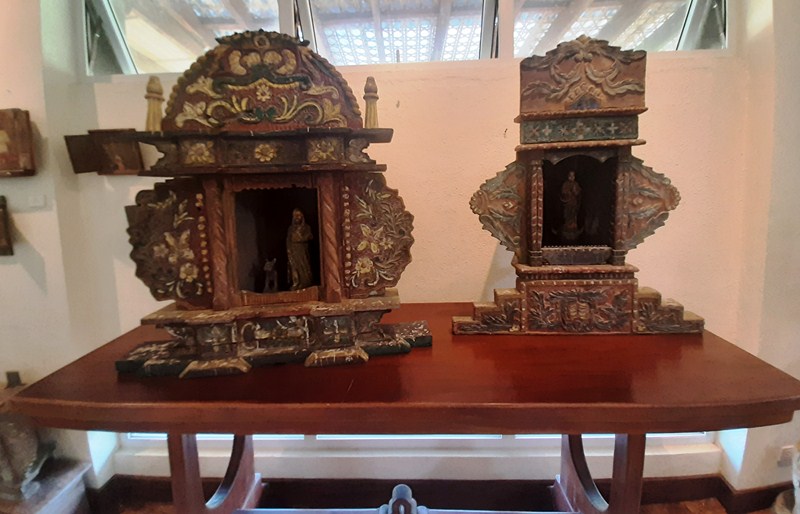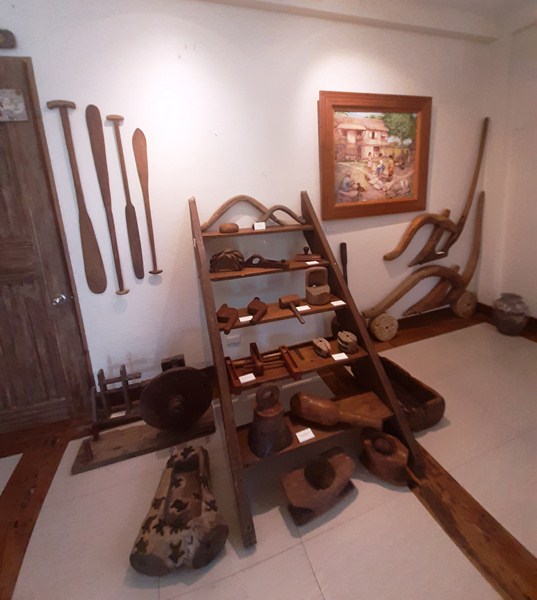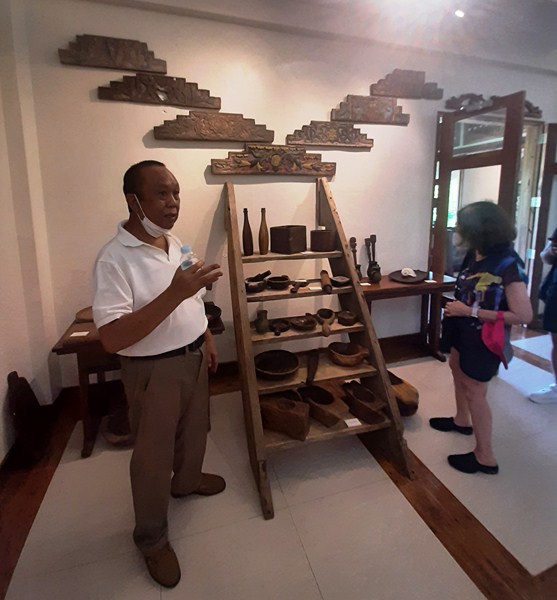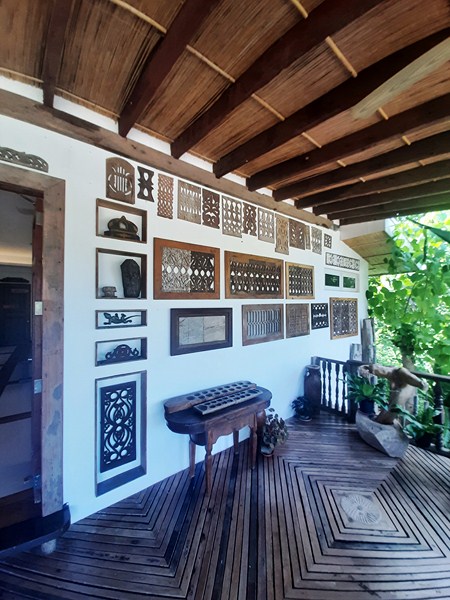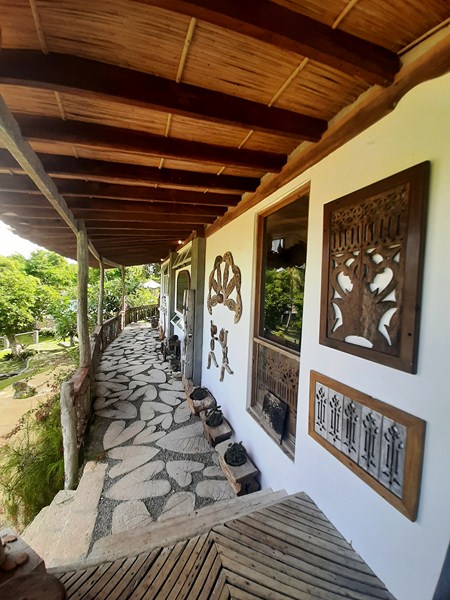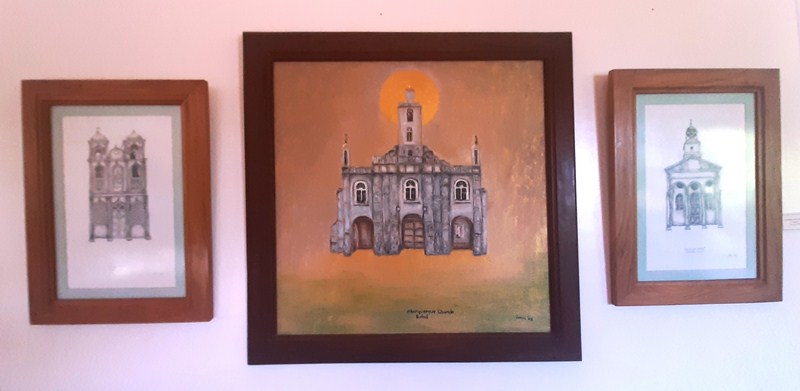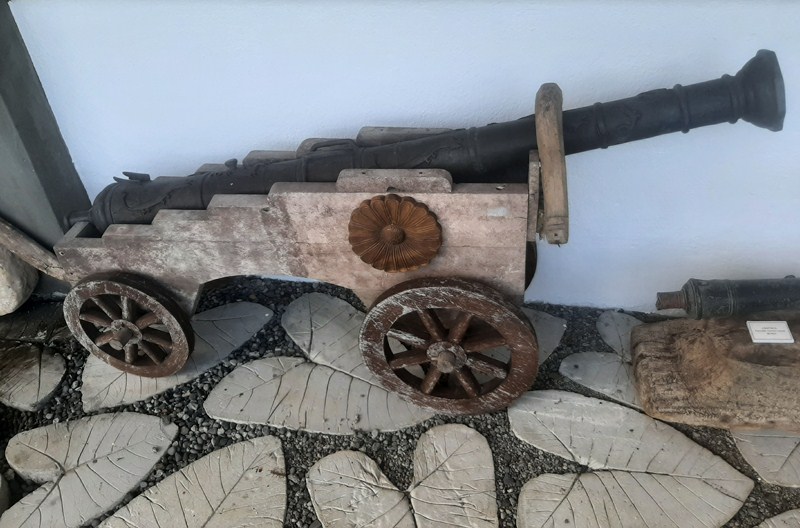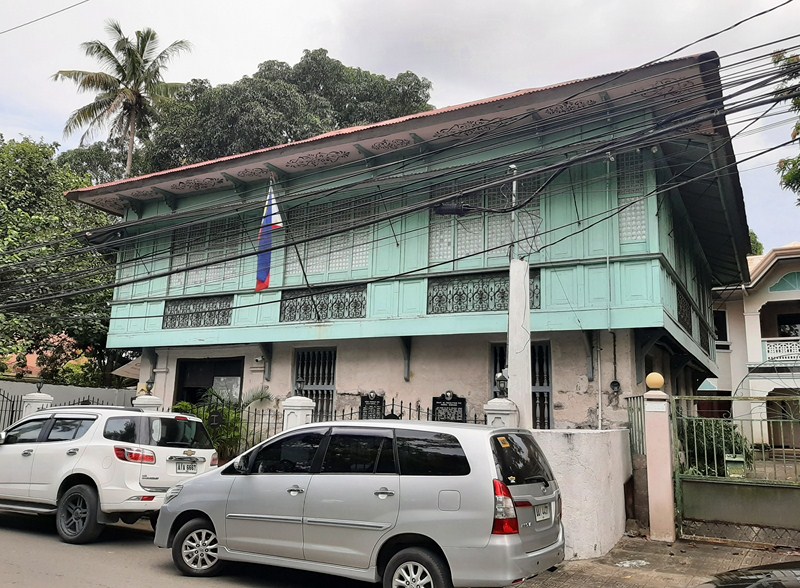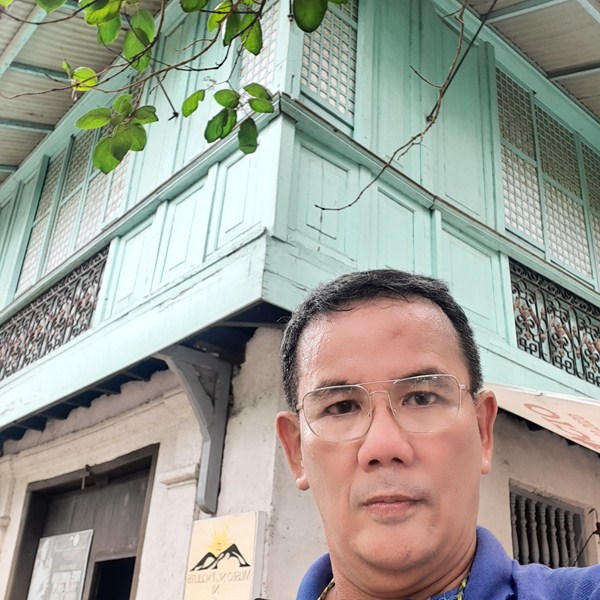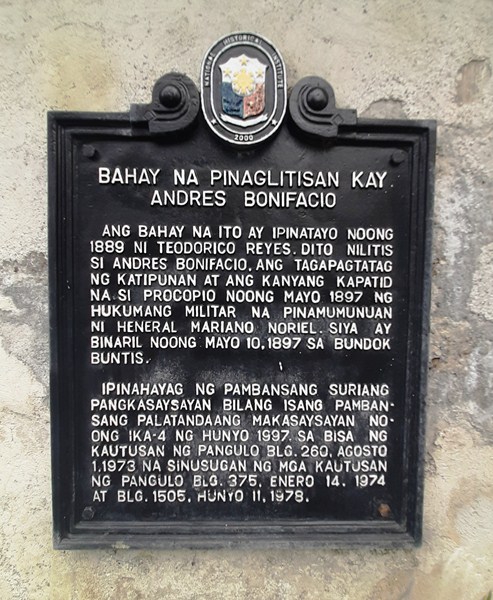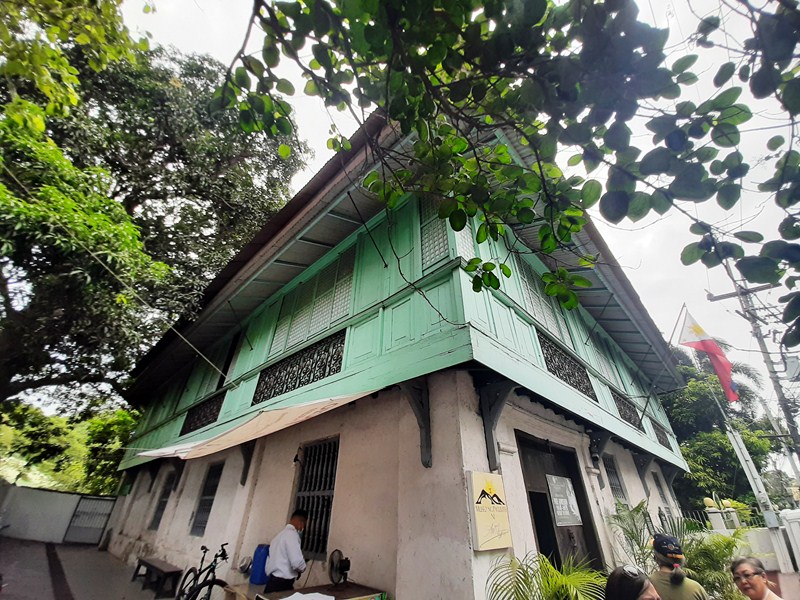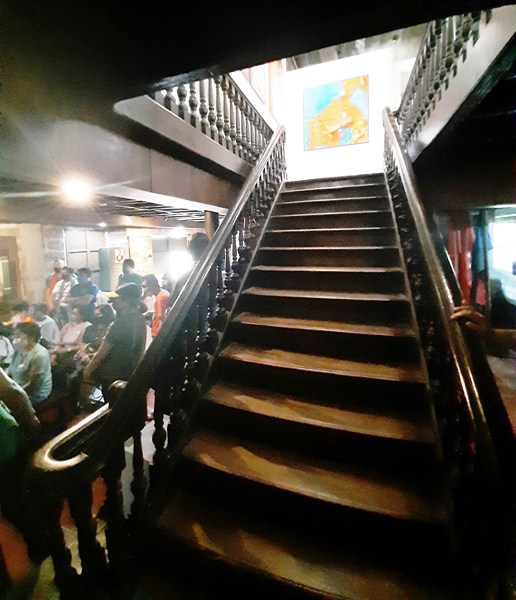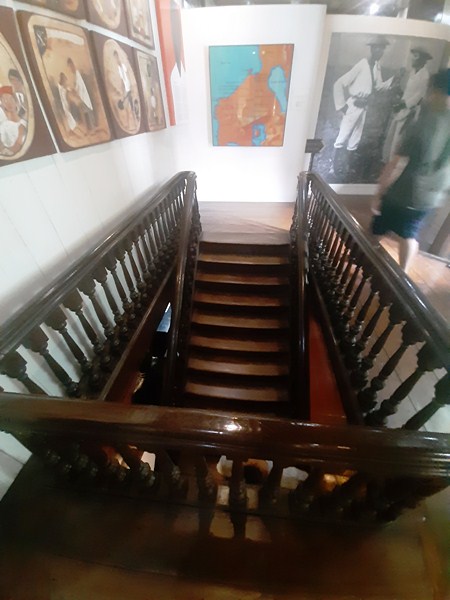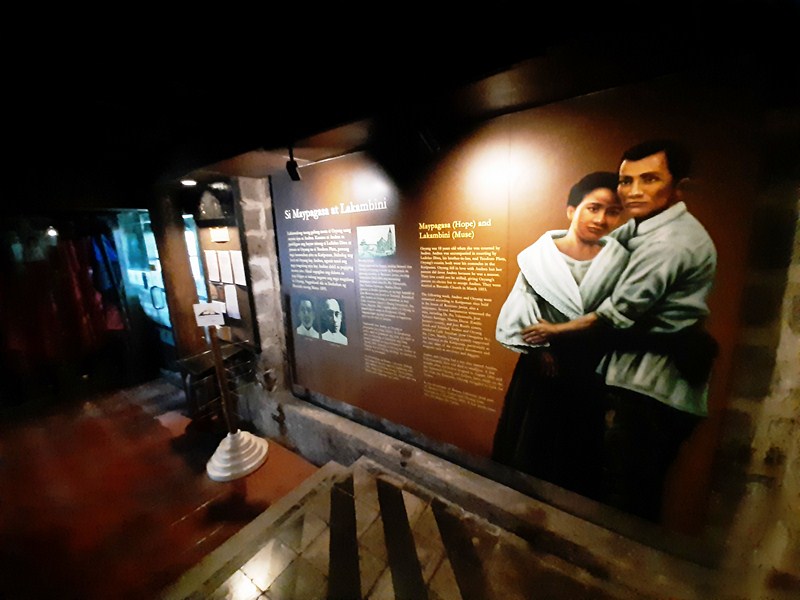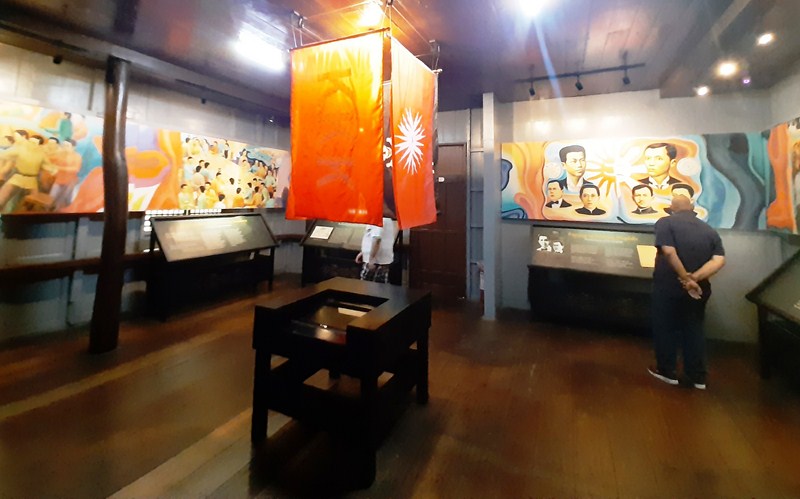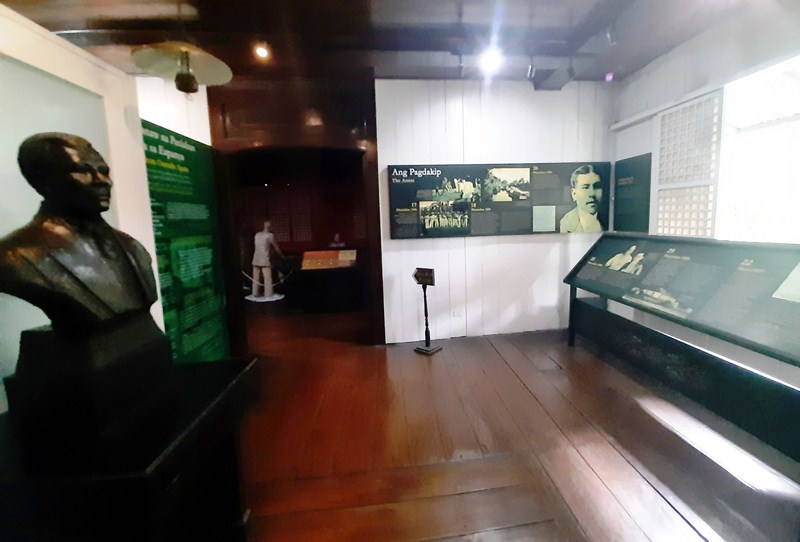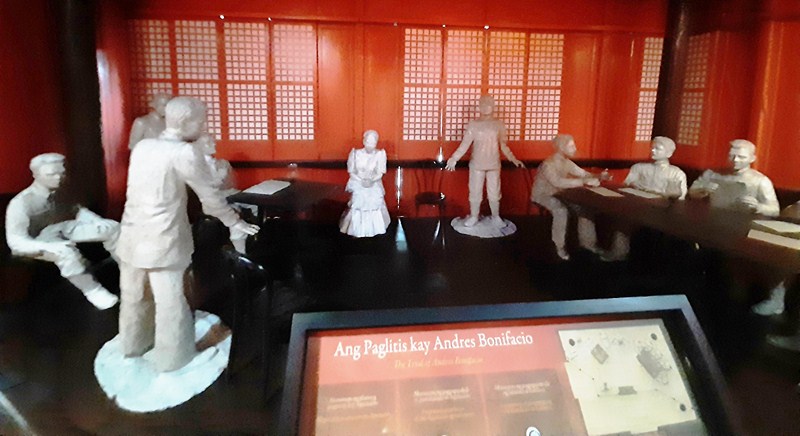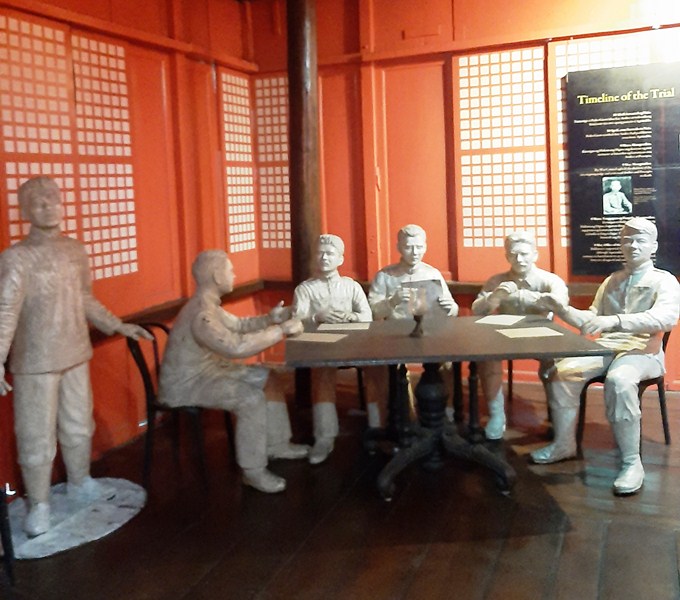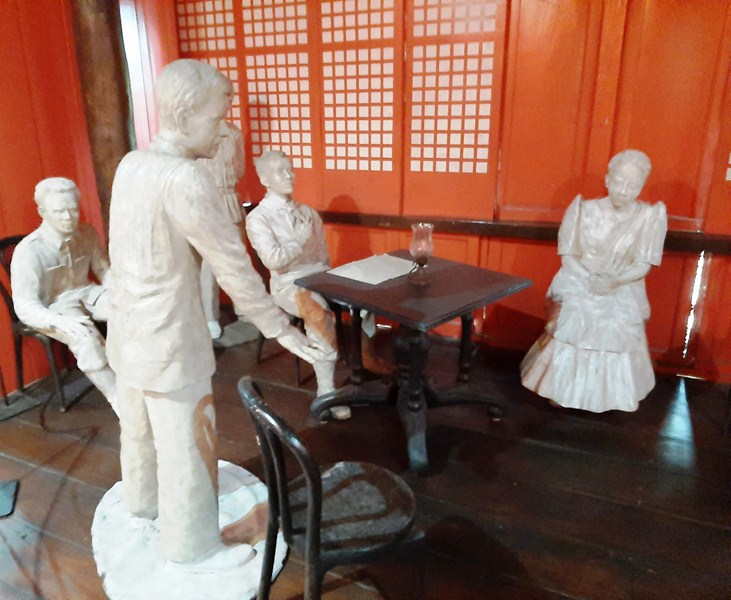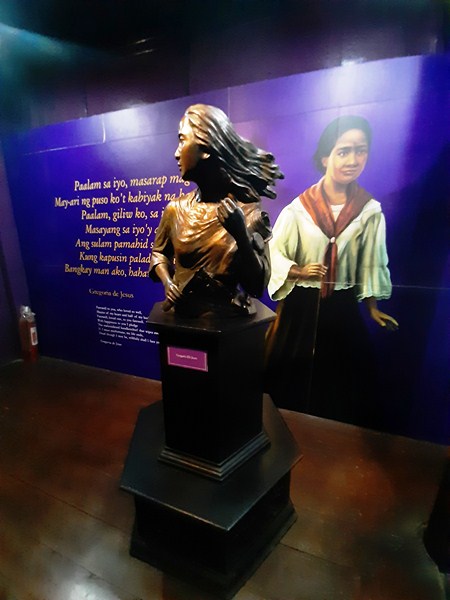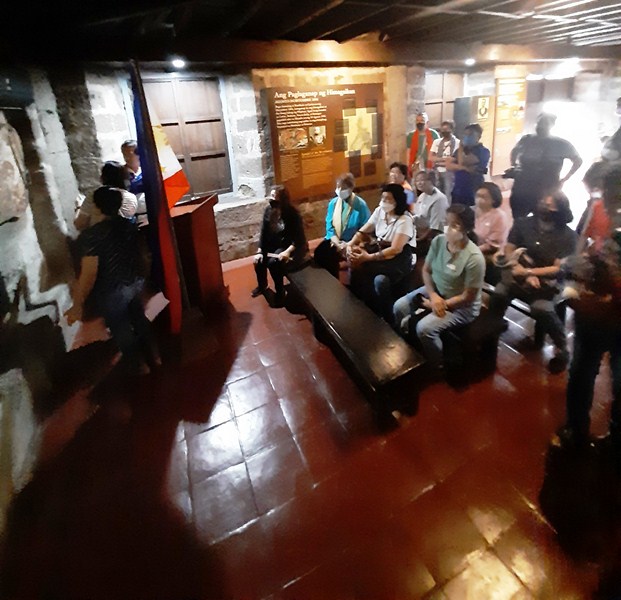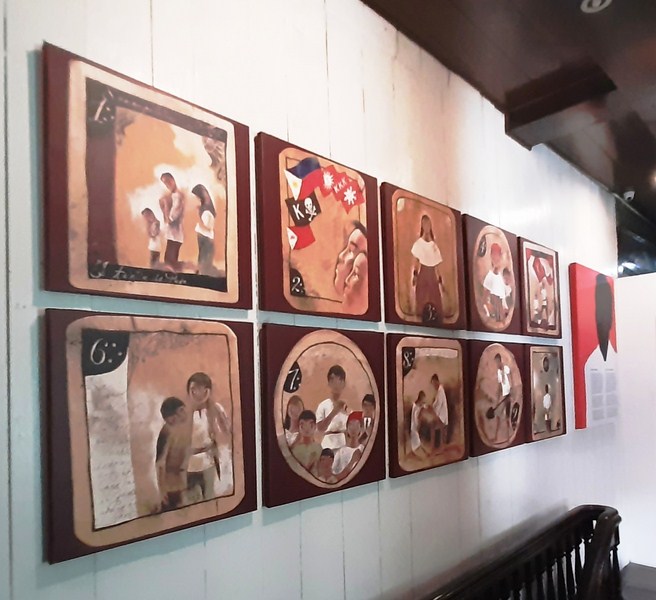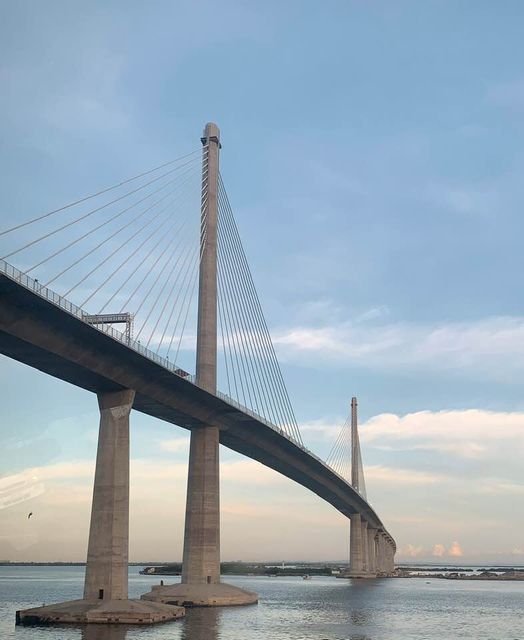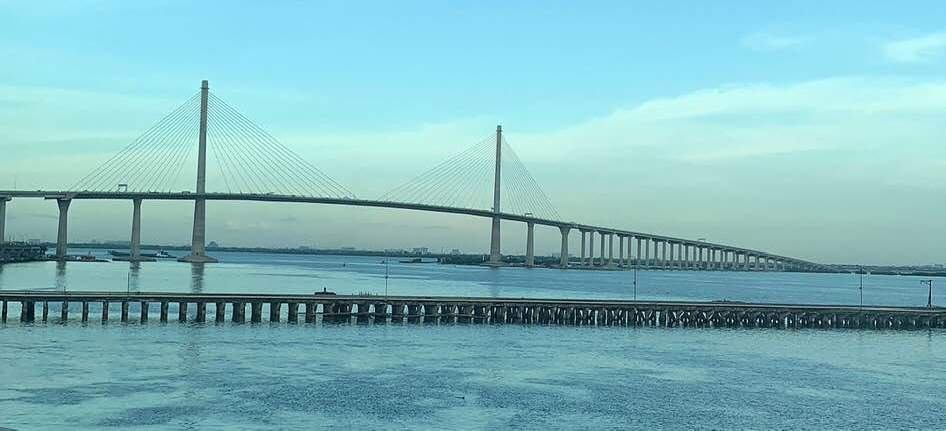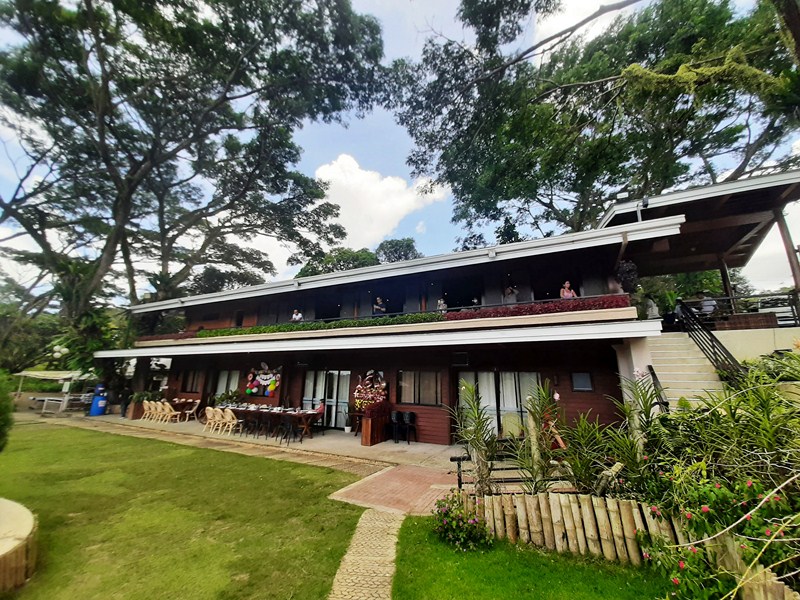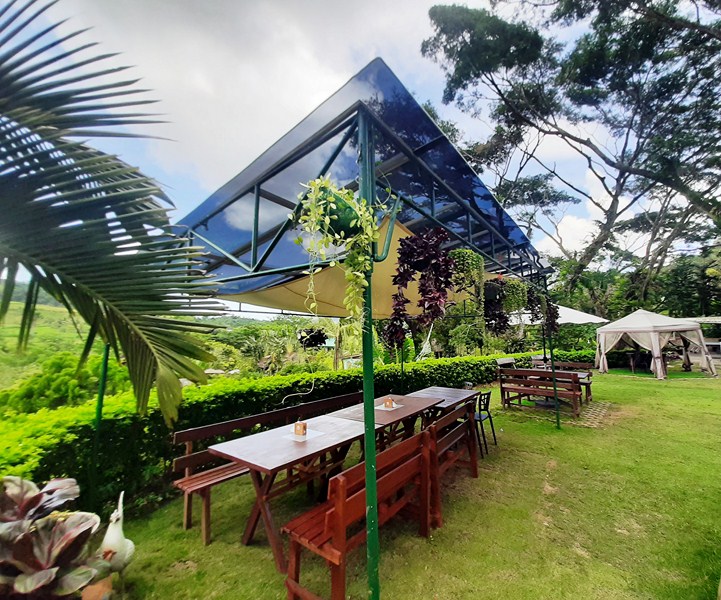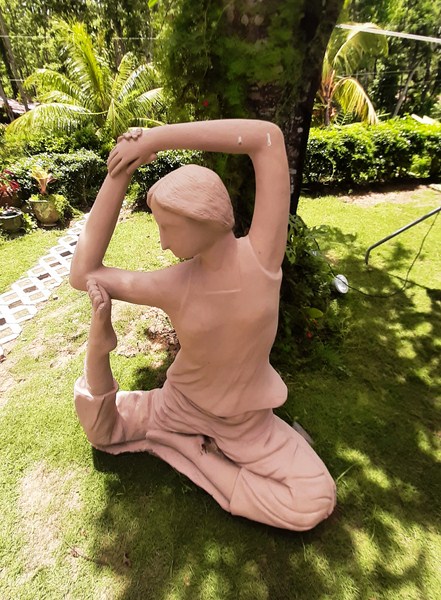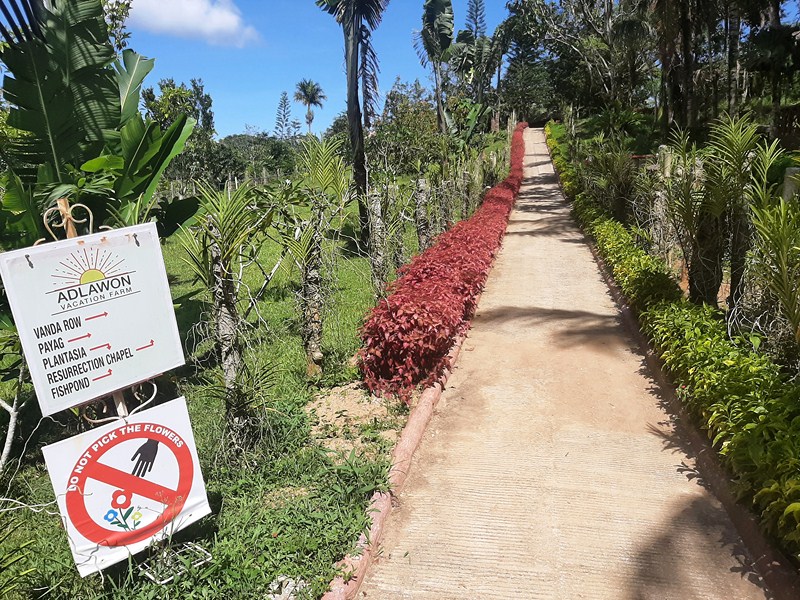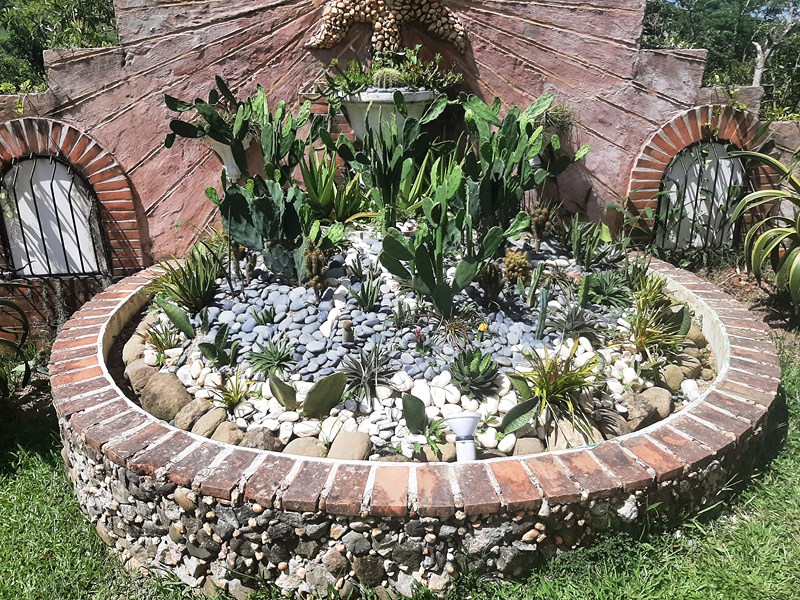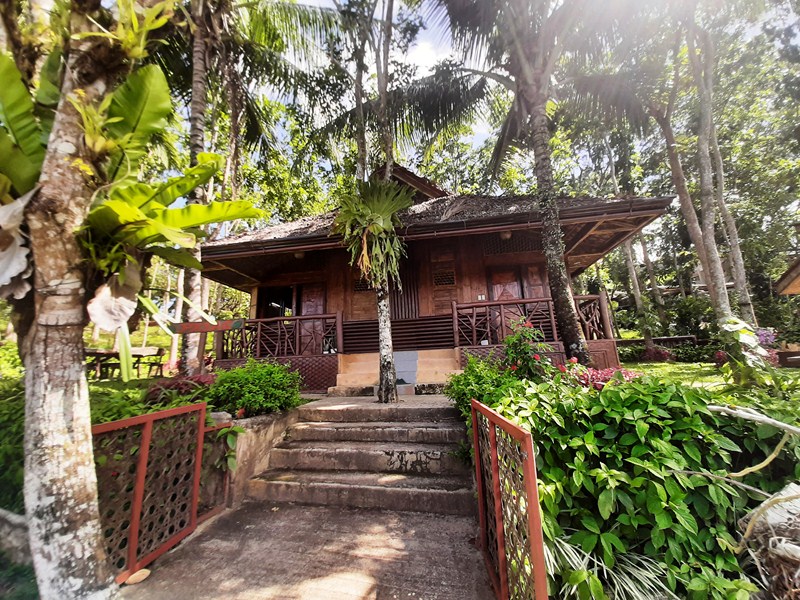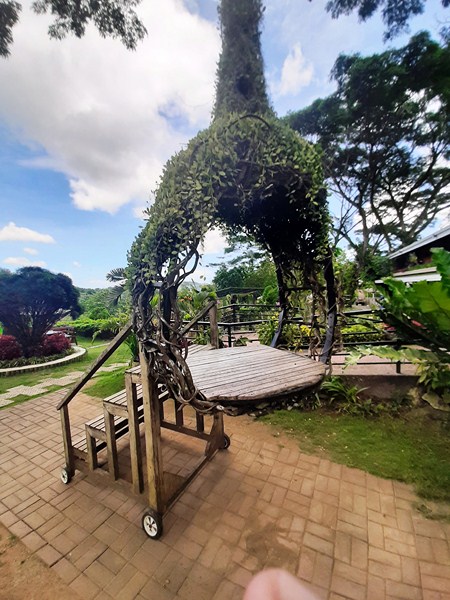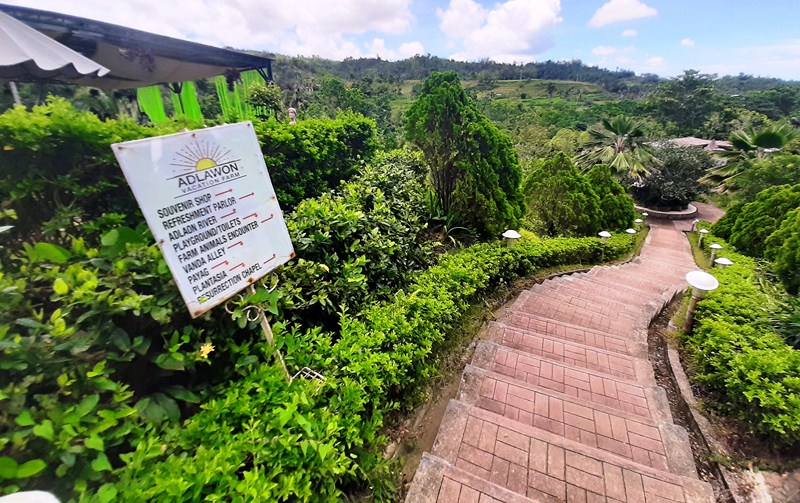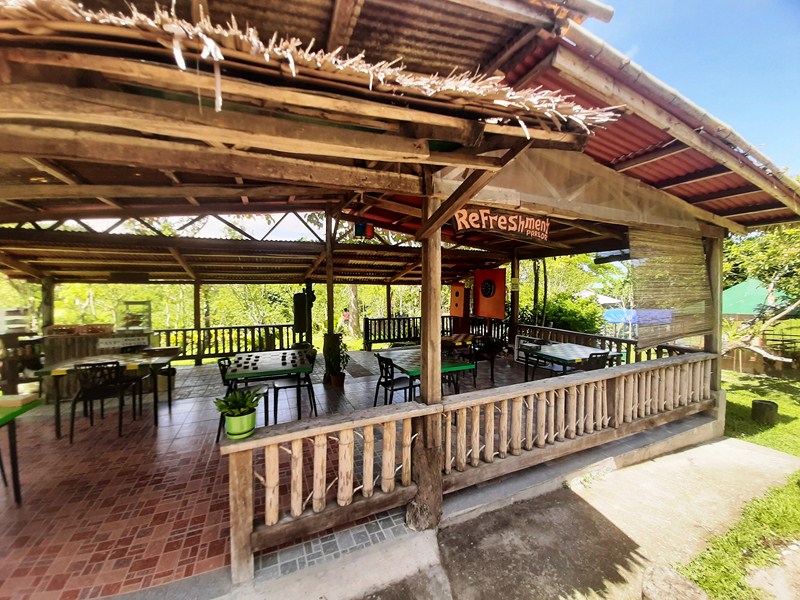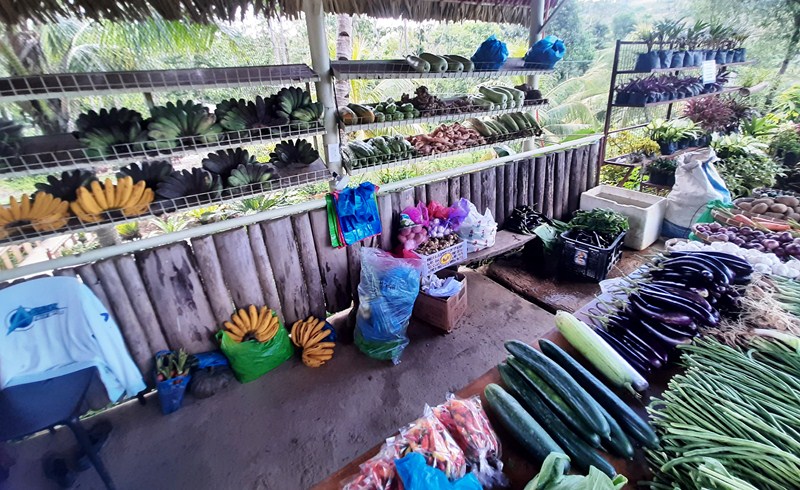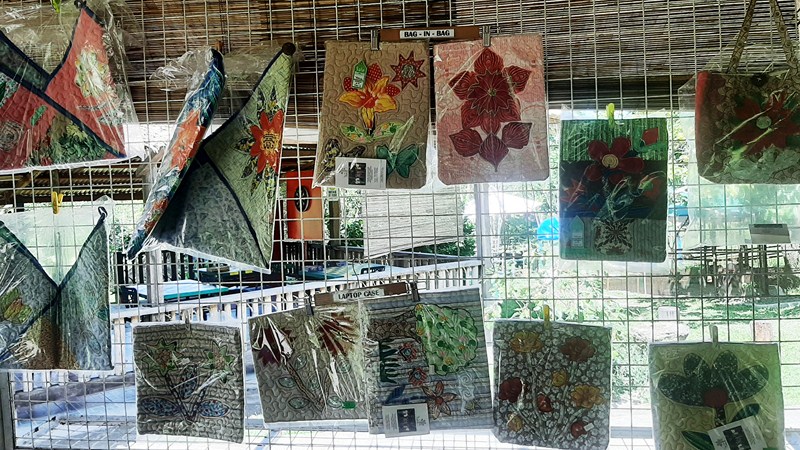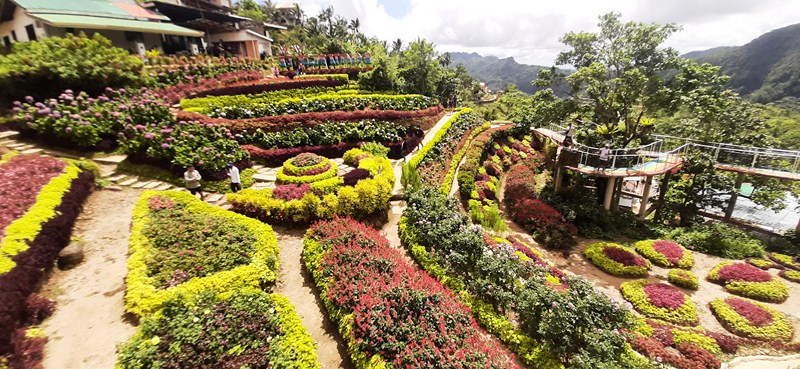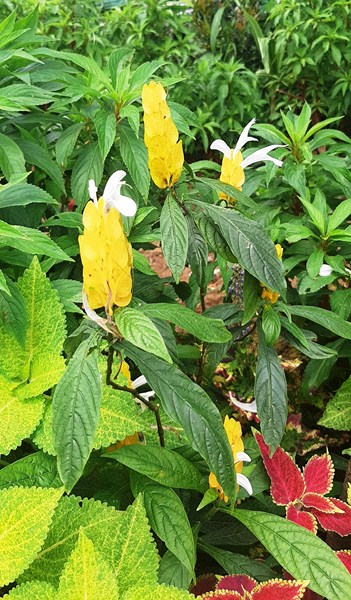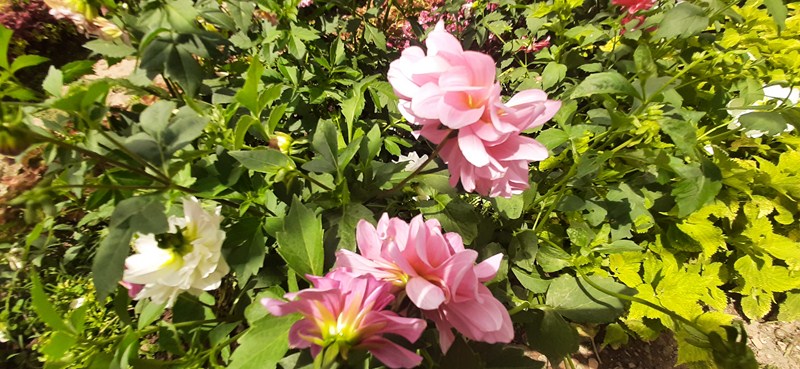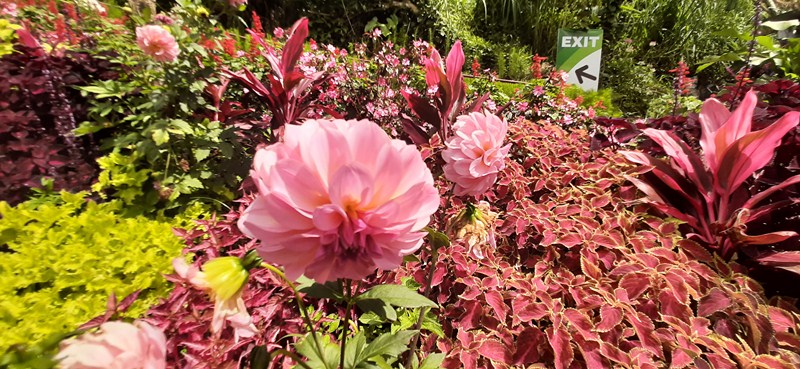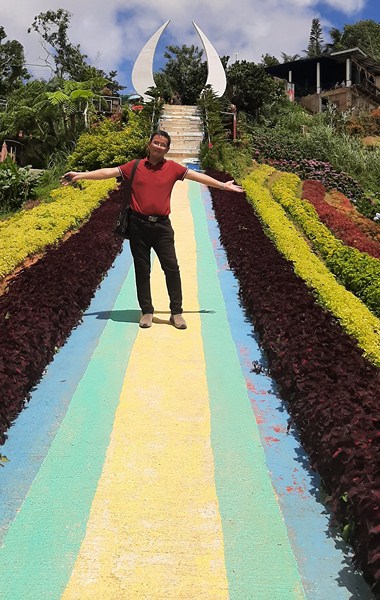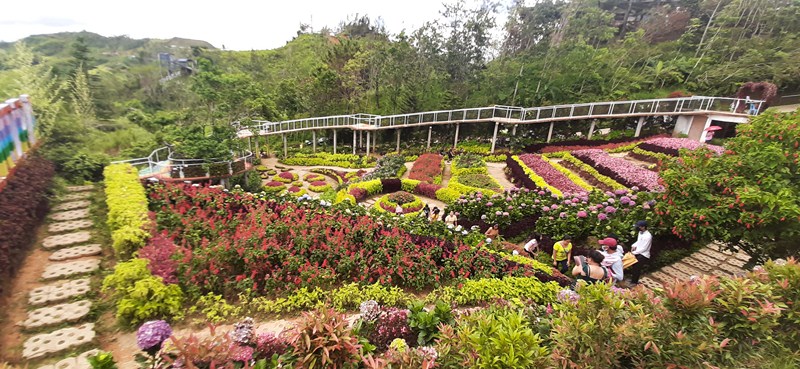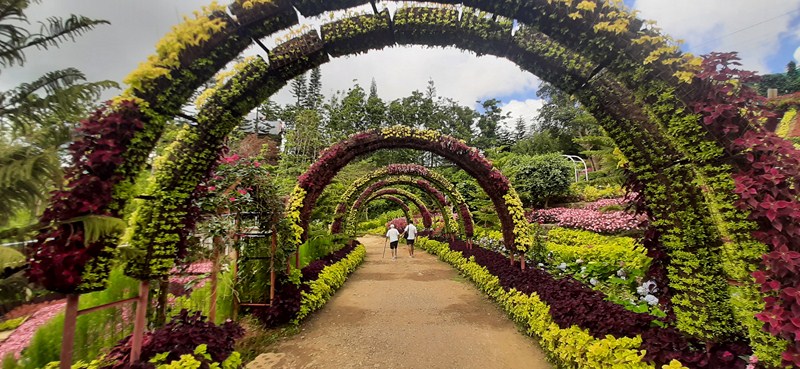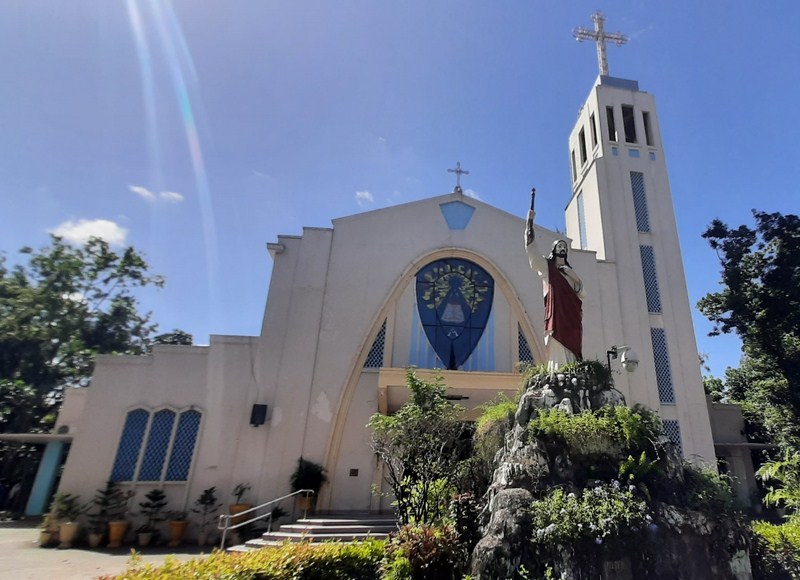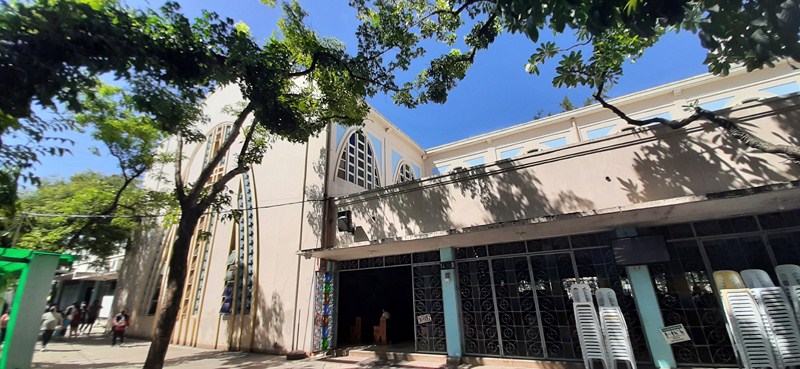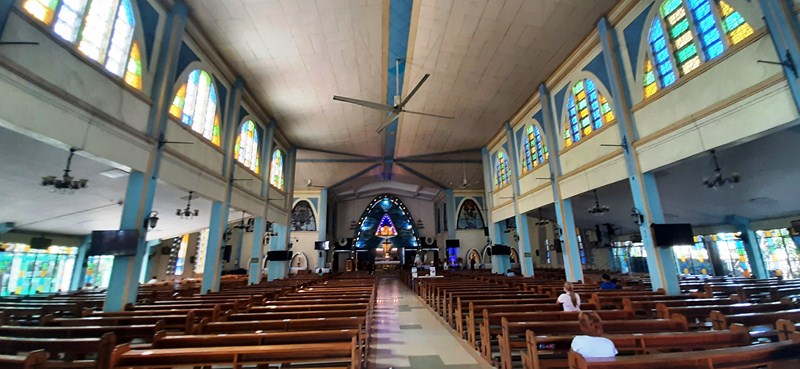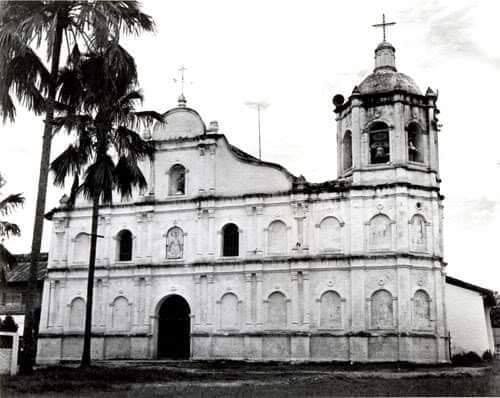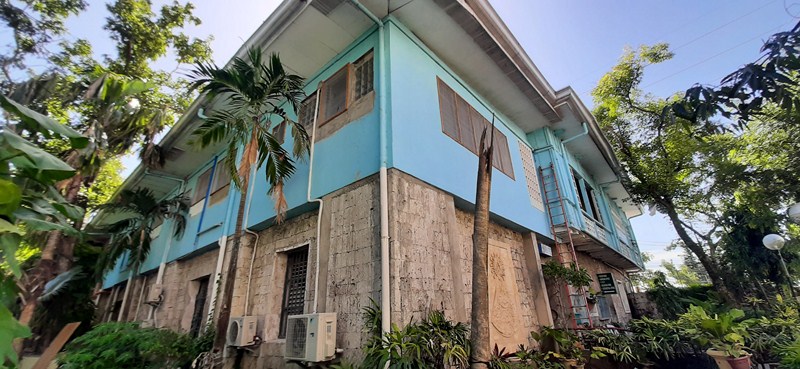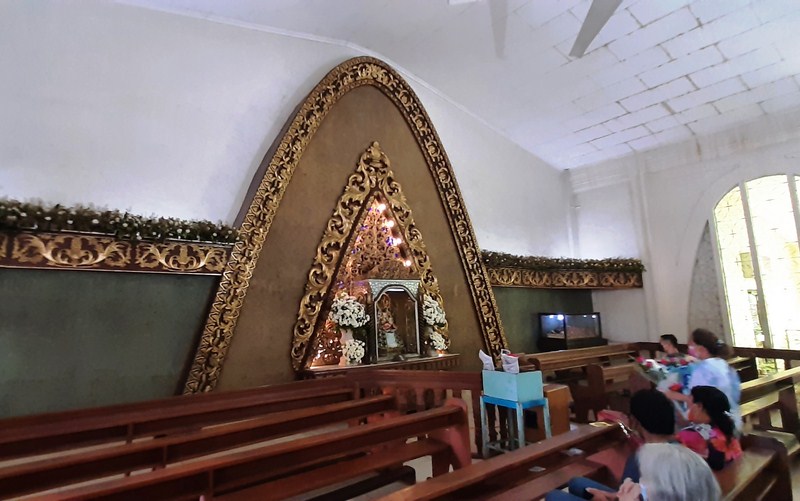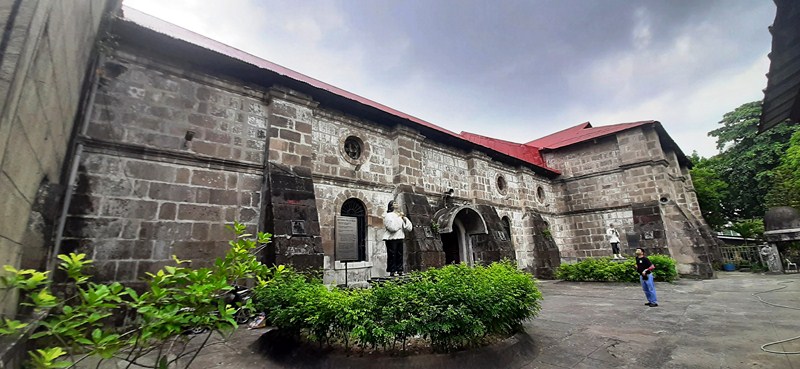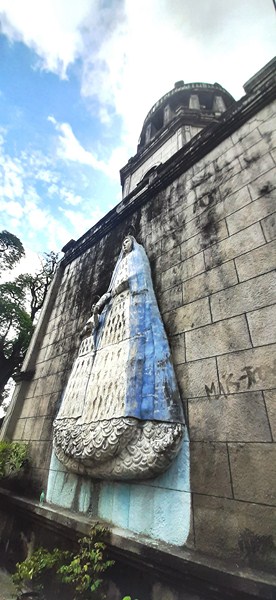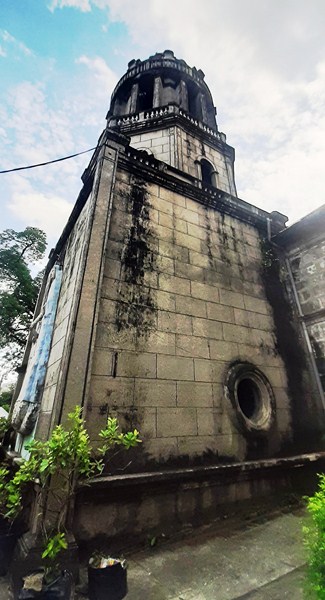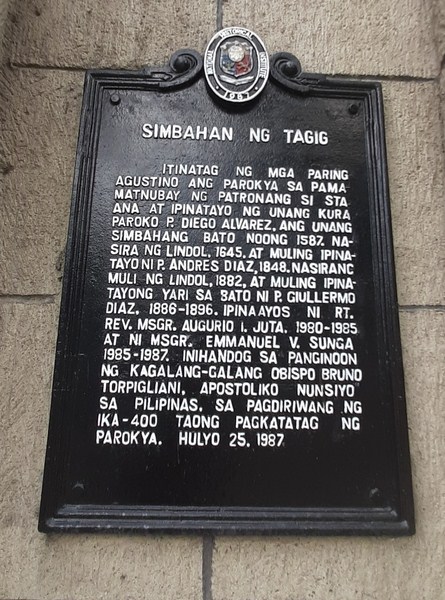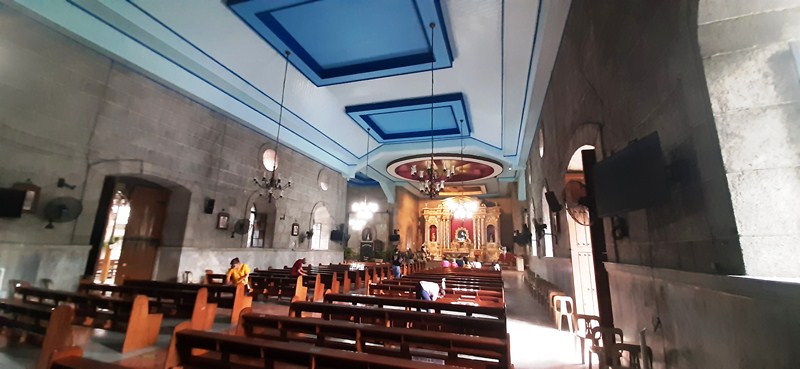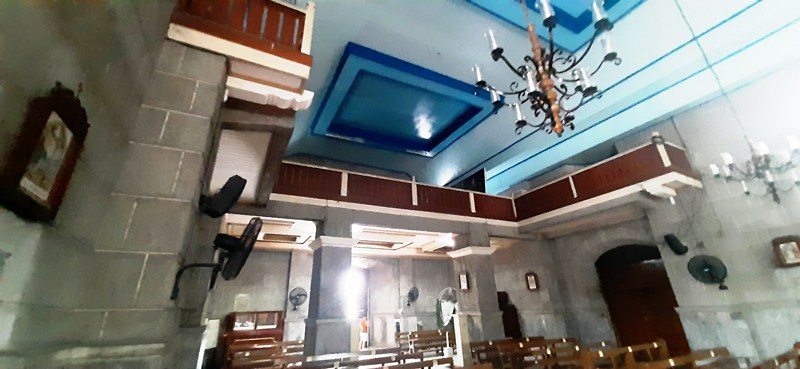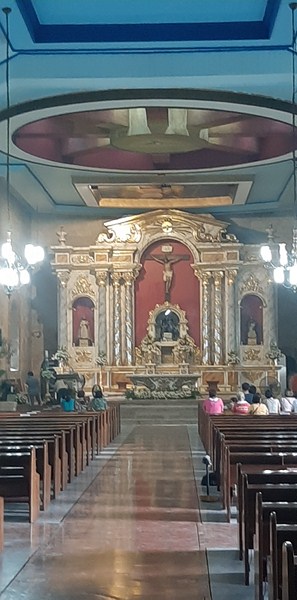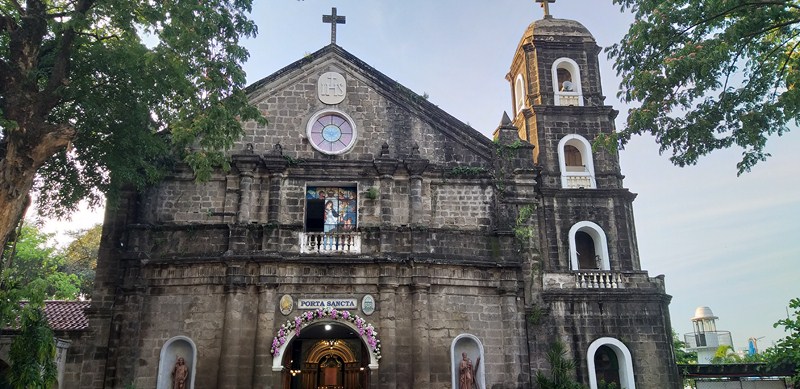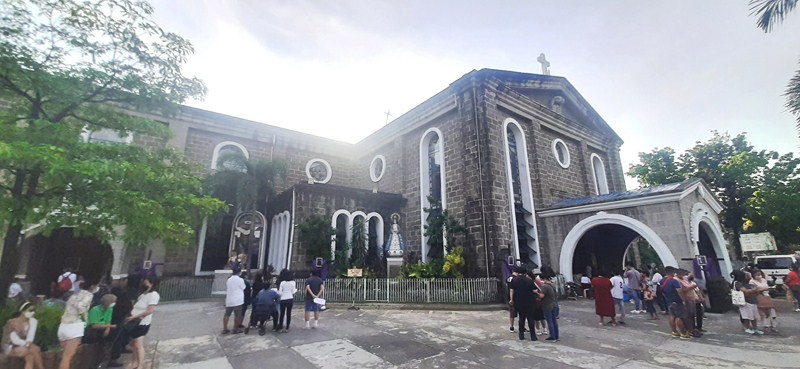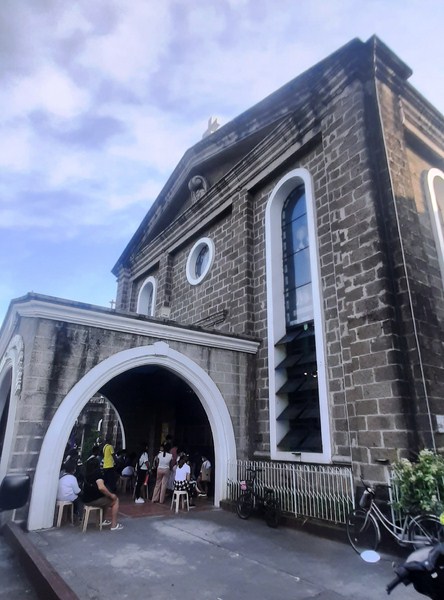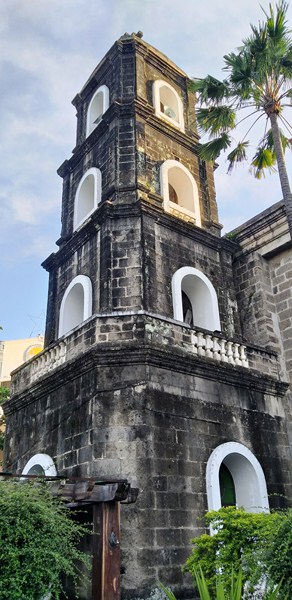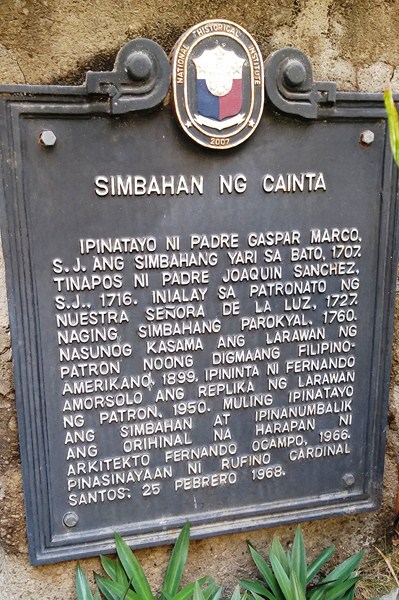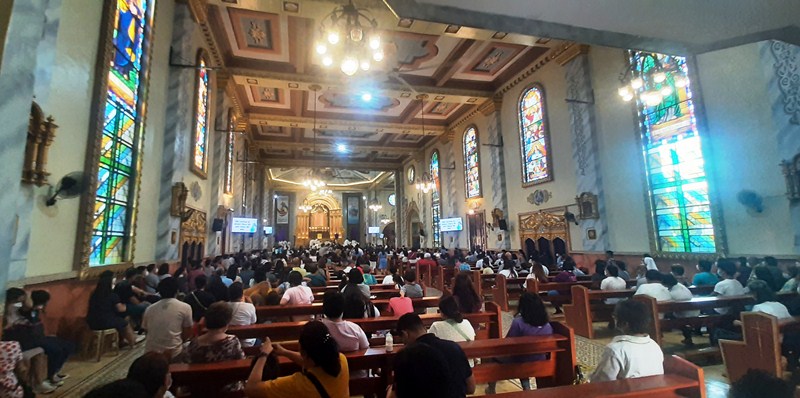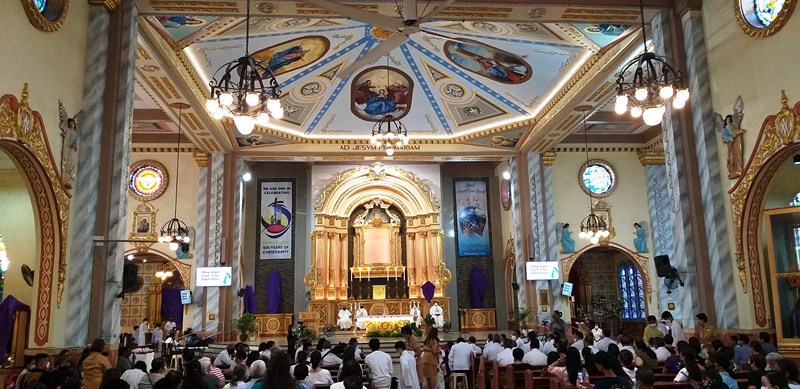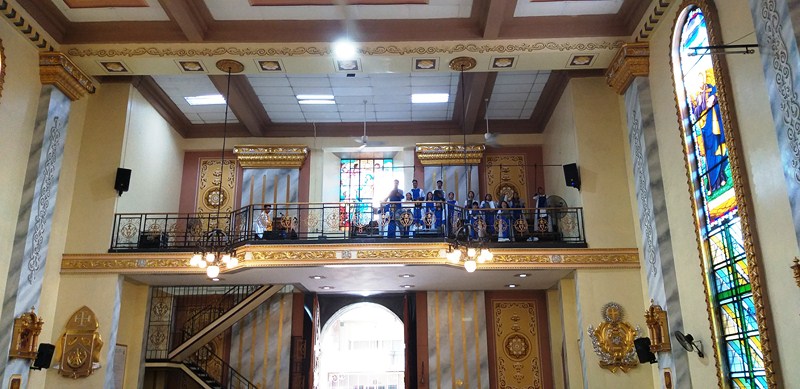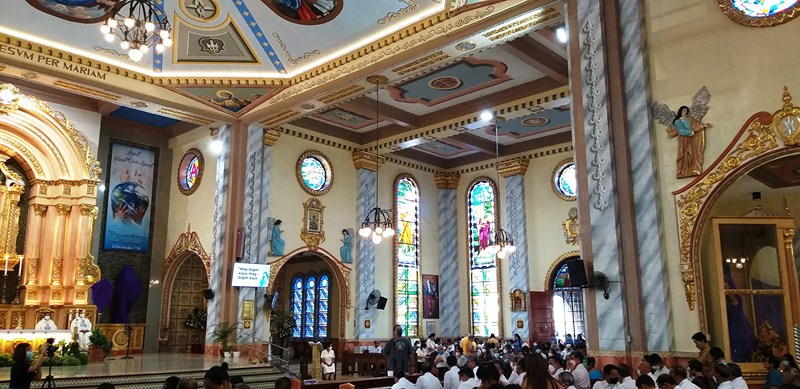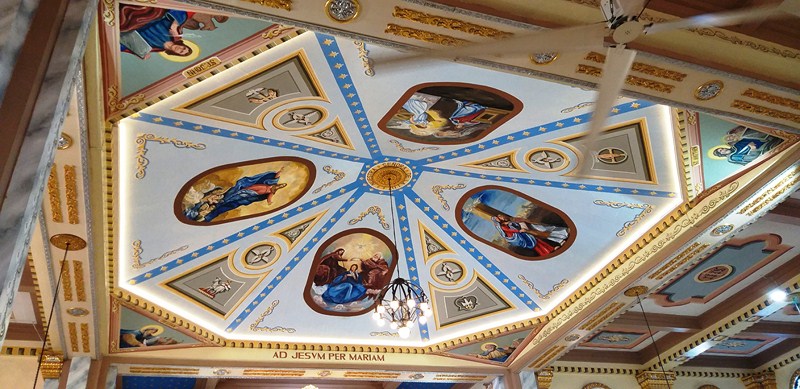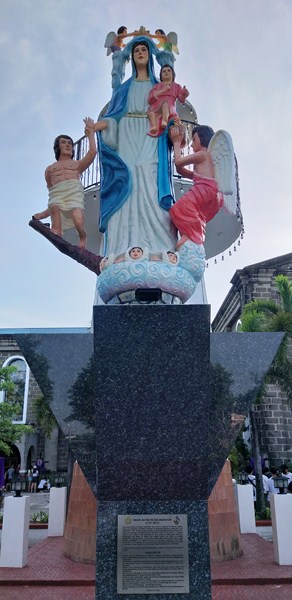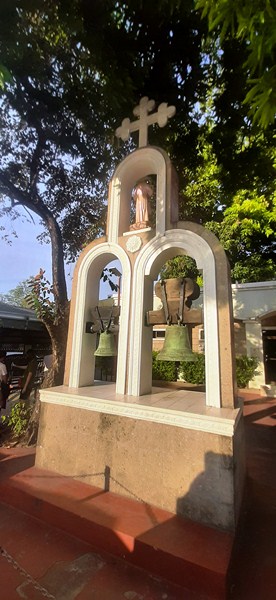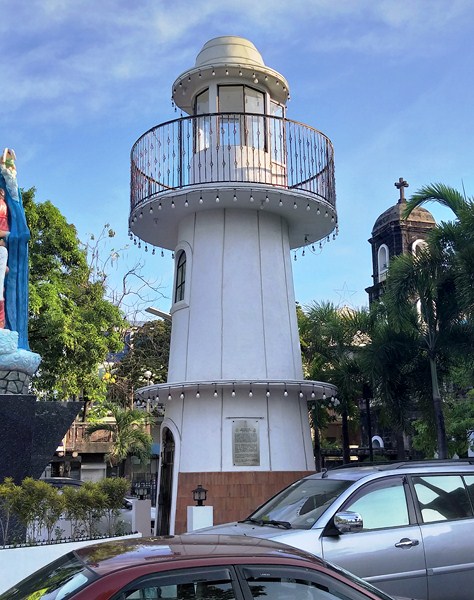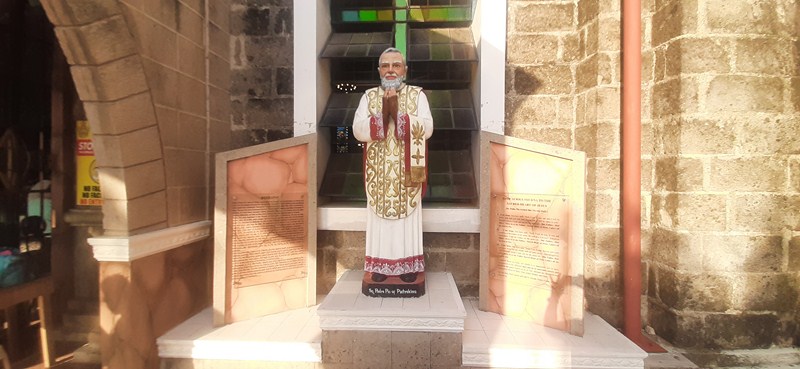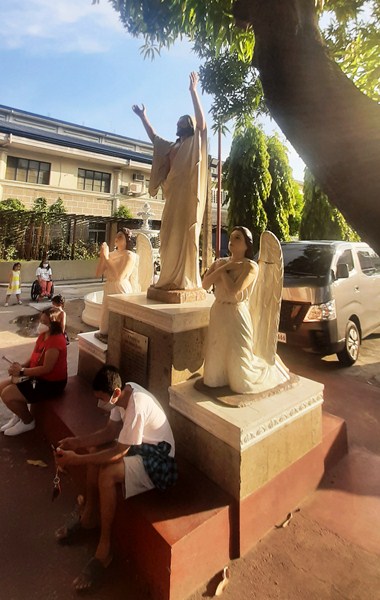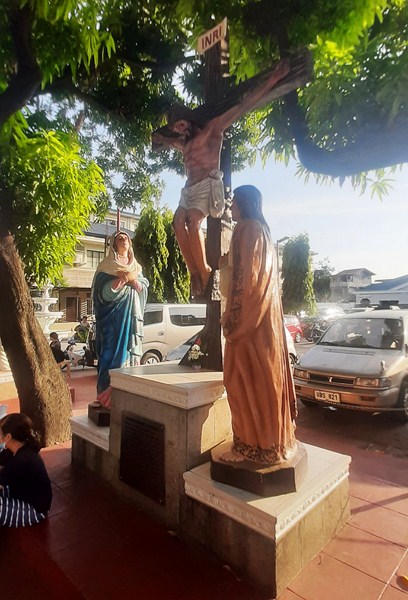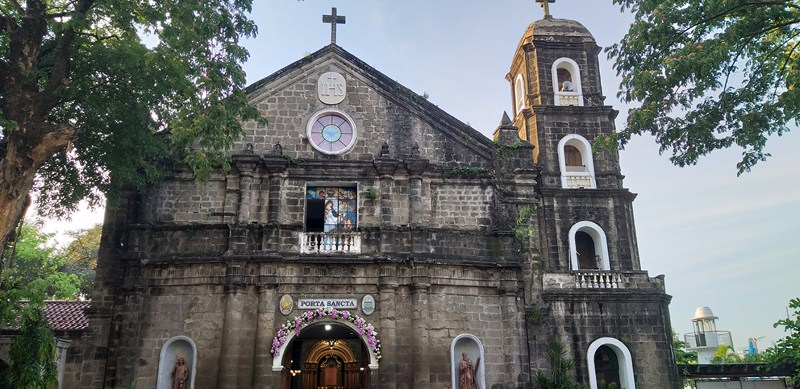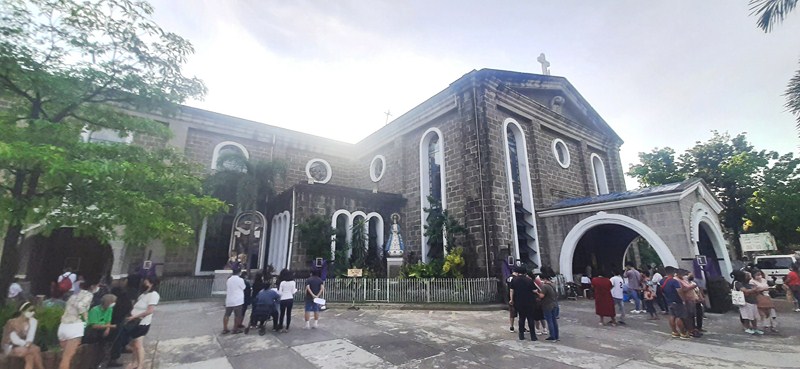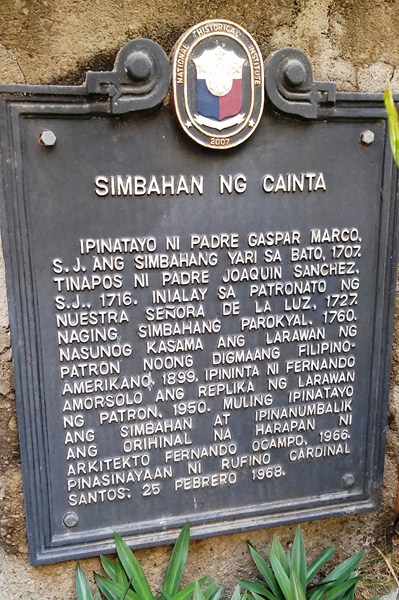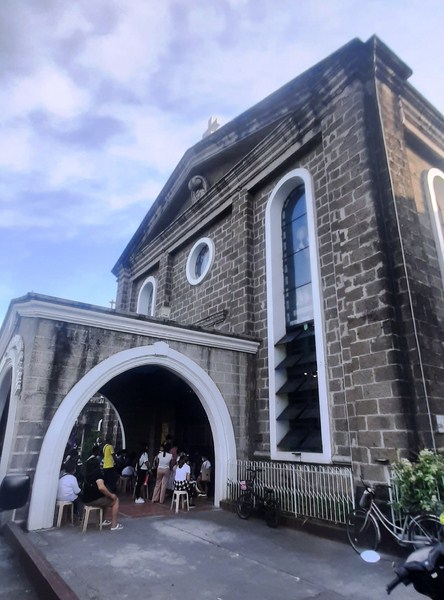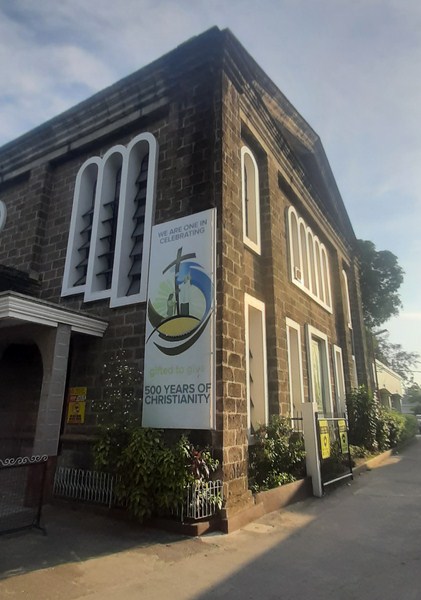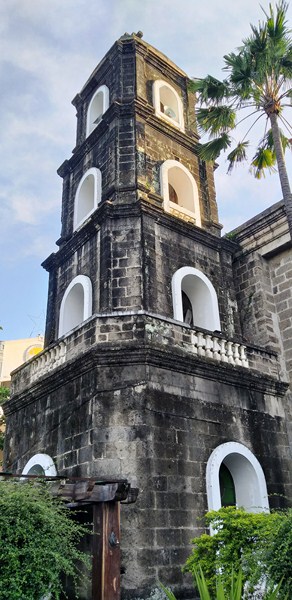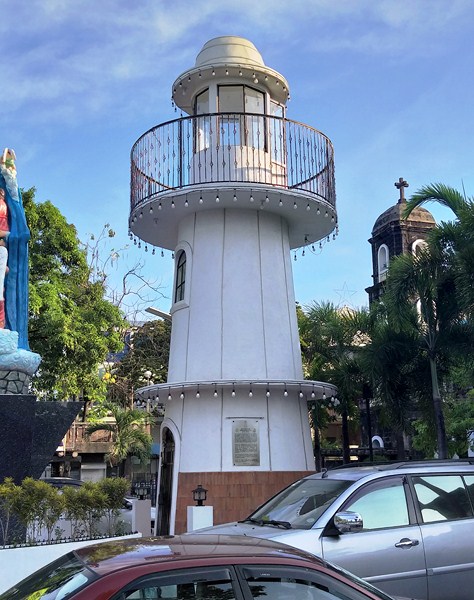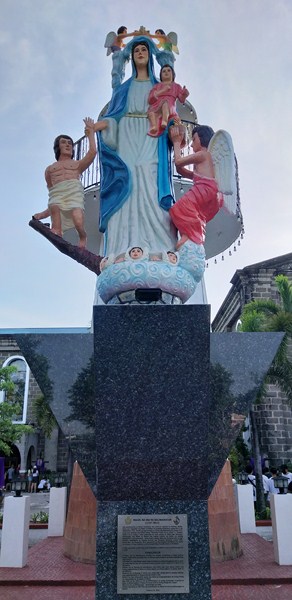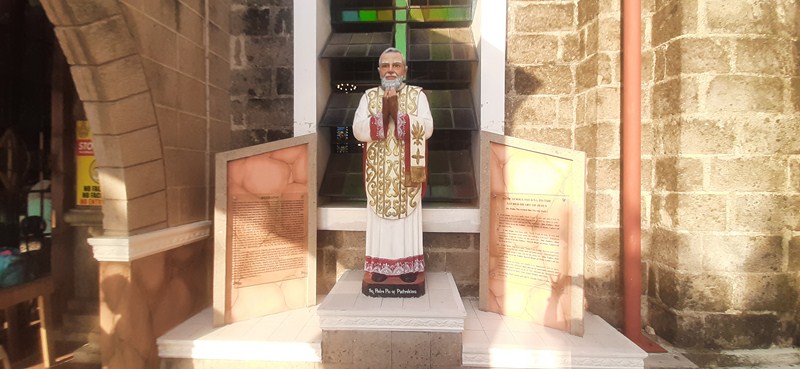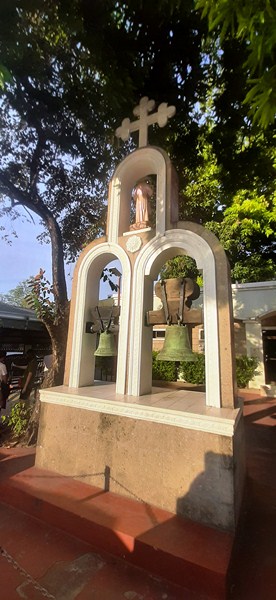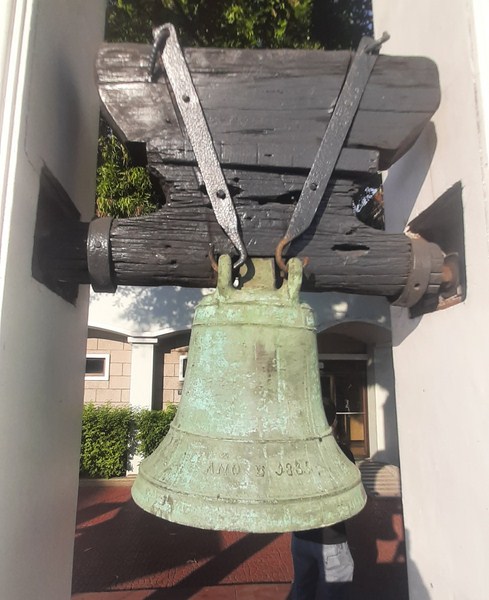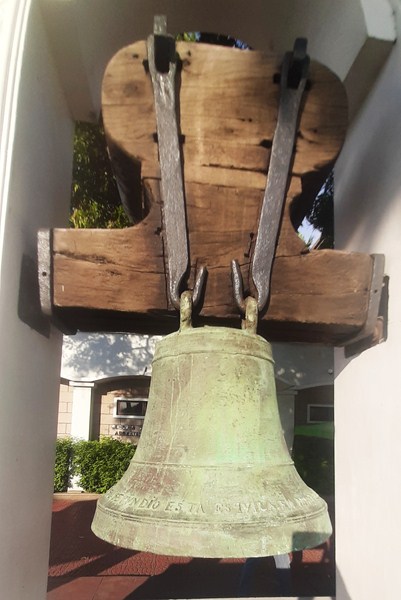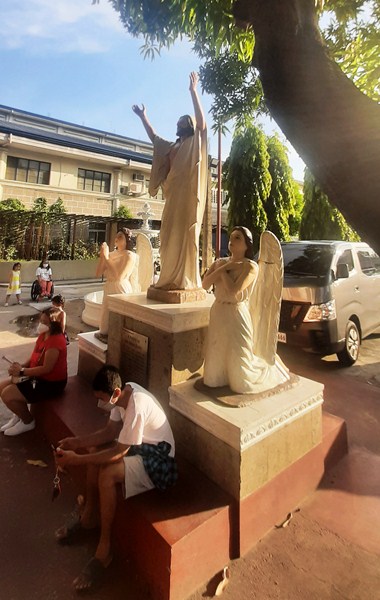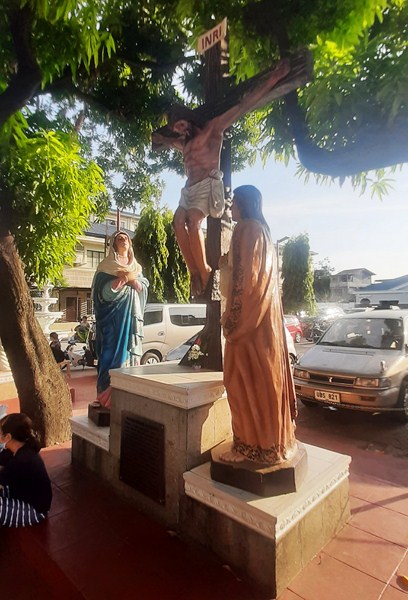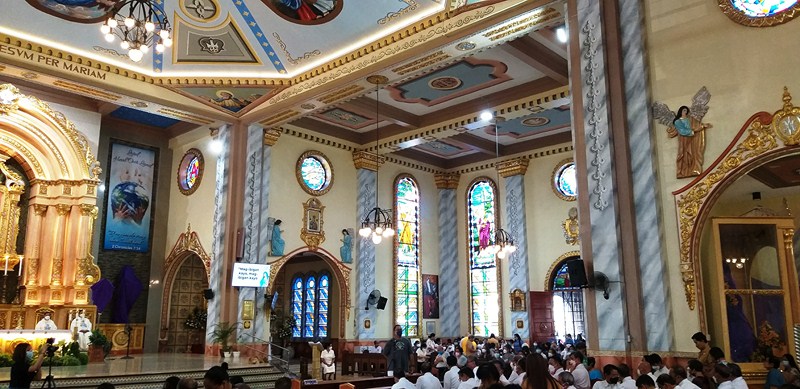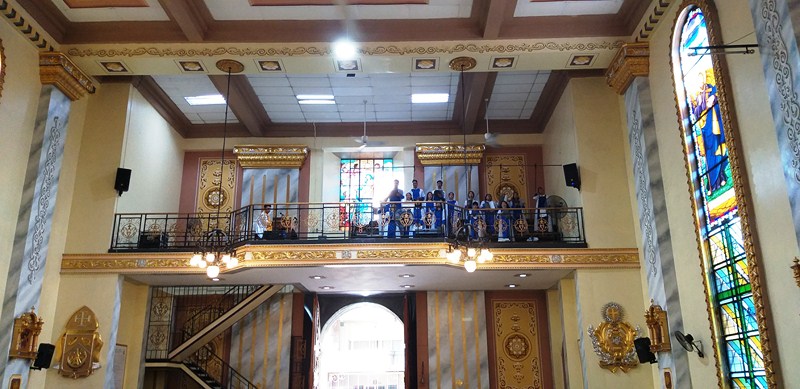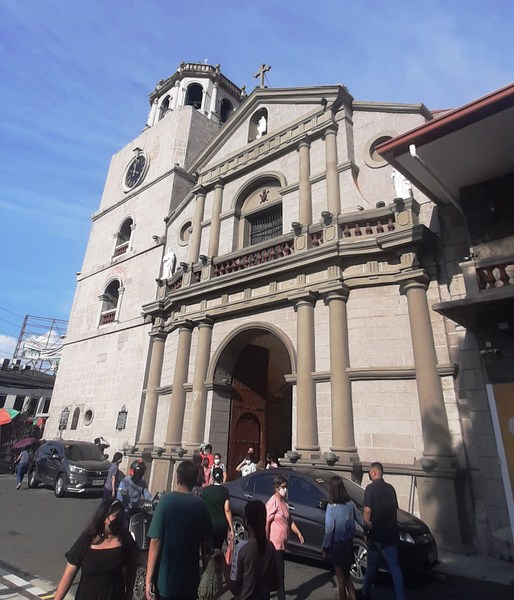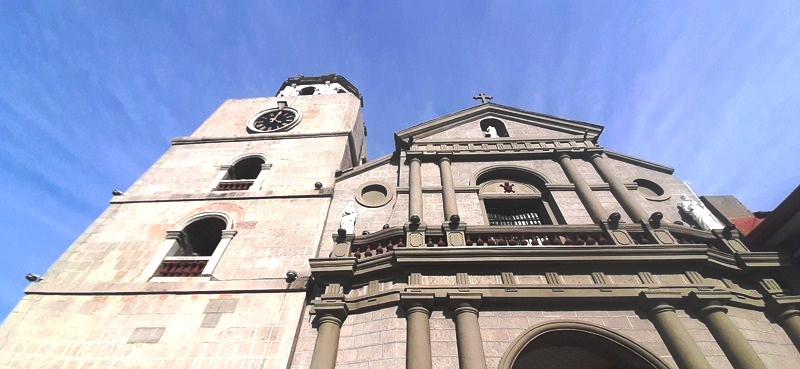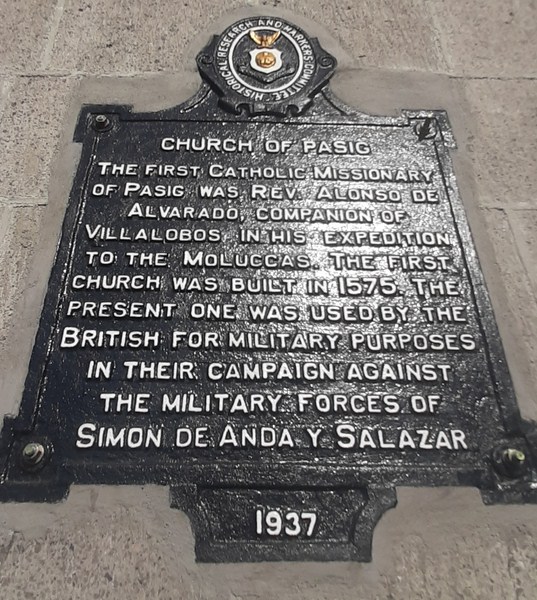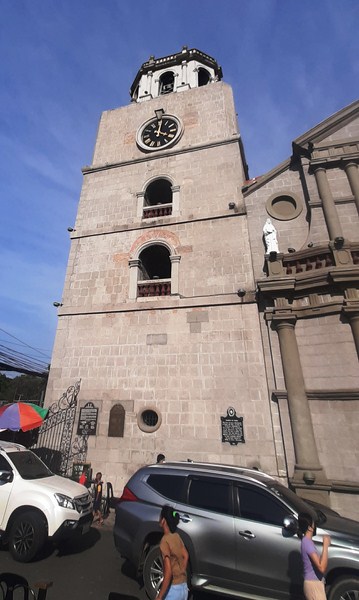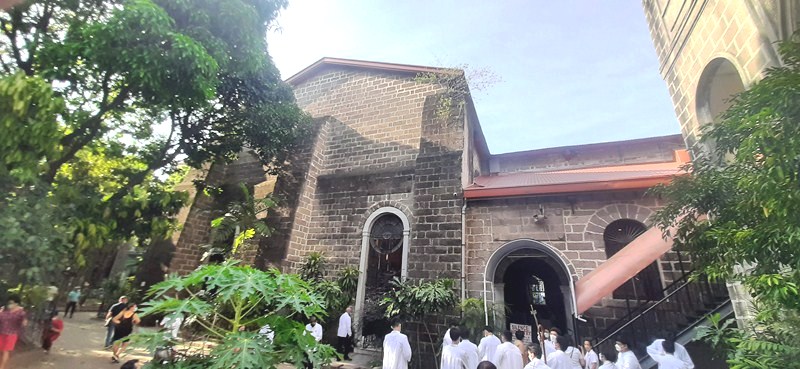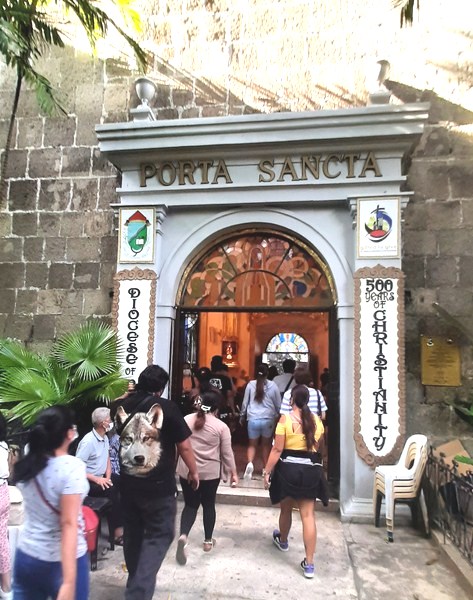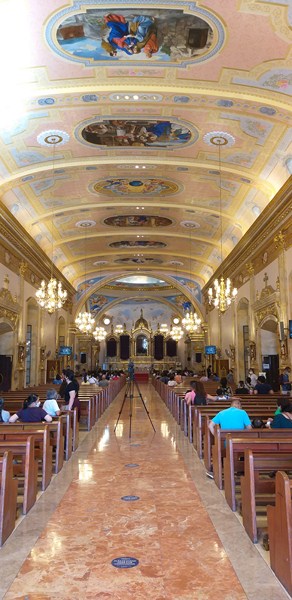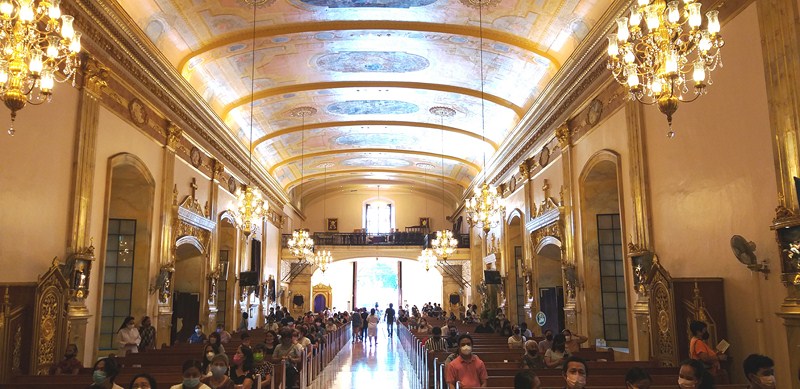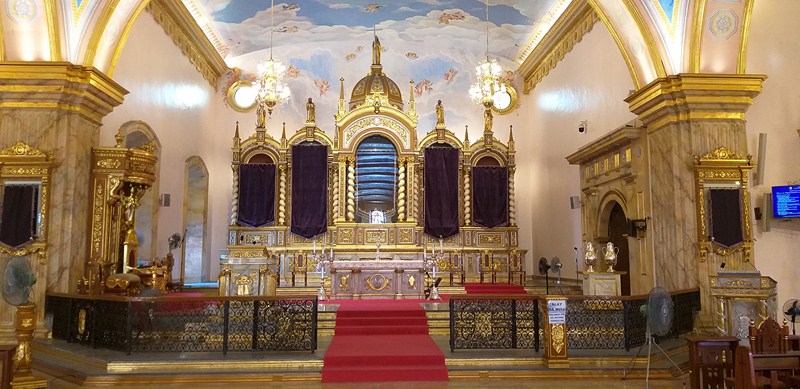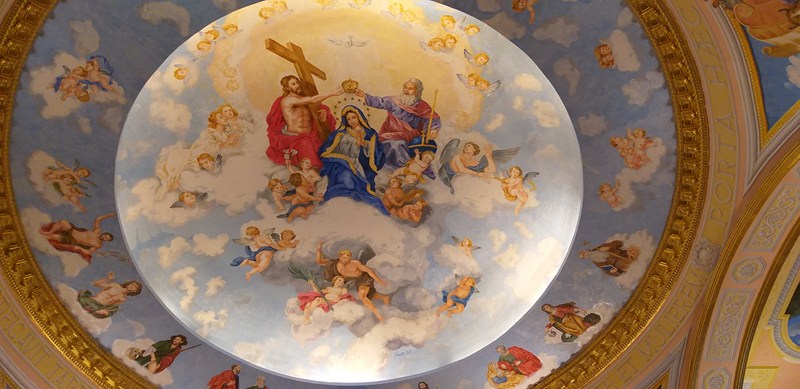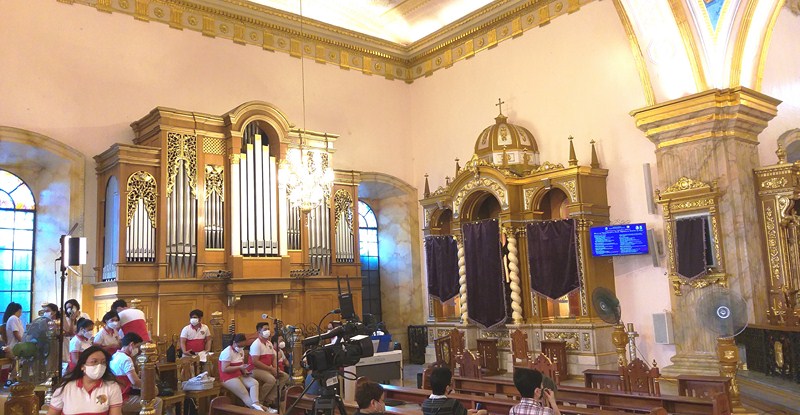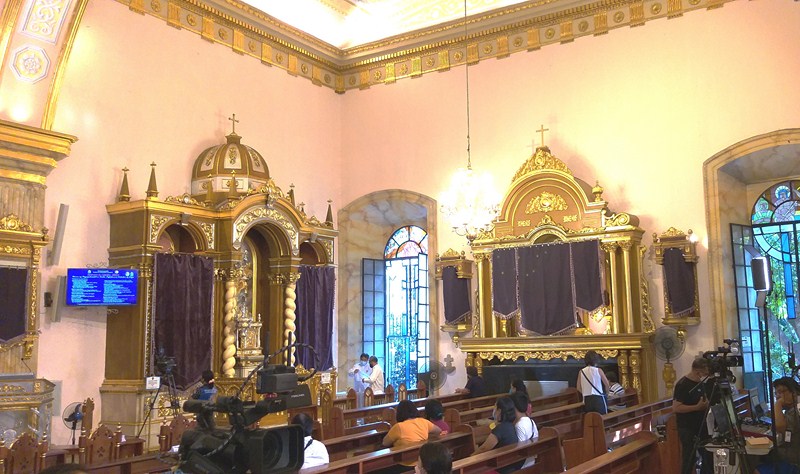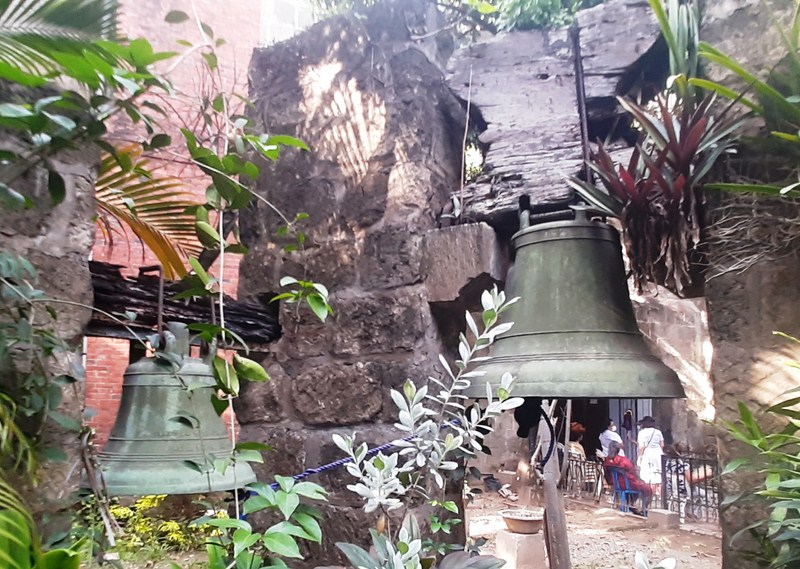Our first stop was Amarela Resort (officially opened in May 2006), an advocate for local art and culture since its inception as a venue where Boholano heritage, art and culture could be preserved and showcased. Amarela (from the Spanish word for “yellow”). Perched on a cliff , this beautiful boutique hotel, with commanding views of the azure sea and the longest white sand beach in Panglao, is a two-time ASEAN Green Hotel Award recipient in Bohol.
Upon arrival, we were welcomed by 73 year old resort owner Atty. Lucas “Doy” M. Nunag, former chairman of the Bohol Tourism Council. Since he was a practicing lawyer, the affable Doy has been collecting art pieces and antique décor (old wood accents such as latticework, balusters, windows and doors), old implements and furniture from Bohol. Boholano historian Marianito Luspo accompanied us.
Started as a vacation house, Amarela Resort was the first resort project of Rosario “Chichi” Vasquez-Victorino (a former colleague of mine at Manosa-Zialcita Architects) who also designed two houses of Doy in Manila. In its conceptualization, design and operation, the resort incorporated Bohol’s rich heritage and culture, making it a venue where people can truly experience local flavor through artistry and craftsmanship.
The main house, where we were first entertained, used repurposed and reclaimed old, beautiful and incredibly durable hardwood (the imposing, turn-of-the-century, solid wooden doors; handcrafted lattices; wooden shutters, balusters and flooring), taken from a house of a famed sculptor along the way to Antequera (Doy’s birthplace), using it as decorative elements and giving it the Boholano spirit.
Doy also found old furniture, some of it needing repair. A talented carpenter (who also doubled as a habal-habal driver during the day) from Antequera (a town known for its craftsmanship in woodworking and weaving) to refurbished these as well as craft new furniture using traditional designs.
Its museum, a strong commitment to the promotion and appreciation of local art as well as the preservation of Boholano culture and heritage, houses the majority of the local art and antique collection of Doy, allowing guests to appreciate Filipino and Boholano art and craftsmanship. Most of the paintings and sculptures were created by Boholanos.
The lovely works of the late Hermogena “Nene” Borja-Lungay, who studied under Fernando Amorsolo and a a classmate of the late National Artists Napoleon Abueva and Jose T. Joya, showcase old Boholano traditions as well as renderings of local fruits and flowers.
Works of prominent Bohol-based Guy Custodio, who usually paints religious themes on old recycled molave hardwood, has revived the traditional “Bohol School” painting style. On the other hand, the subjects of Sherwin Tutor are historical events done in a highly detailed figurative style. They include a painting of the two kings of the fallen Dapitan Kingdom located at Tagbilaran Strait. Tere’s also a portrait of a mother and child.
Displayed all over the resort, as well as in the museum, are Baroque-style urnas, some done in triptych (three-panelled paintings hinged together so that they could be closed). These carved wooden shrines for religious icons, of varying sizes and styles, are evidence of the rich spiritual beliefs of Boholanos. Also on display are home tools and antique kitchen utensils and equipment such as a duwang (wooden basin), palo-palo (laundry paddle), lusong (mortar), ganta (measuring implement for grain, sugar and salt), all made from molave wood.
Amarela Museum: Amarela Resort, Lourdes-Libaong Brgy. Rd., Panglao, 6340. Tel: (038) 502-9497 to 99. Mobile numbers: (0917) 819-1007 (Atty. Lucas “Doy” M. Nunag), (0917) 623-0557 (Reservations) and (0917) 774-7200 (Front Office). E-mail: reservation@amarelaresort.com and Imnunag@amarelaresort.com. Website: www.amarelaresort.com. Facebook: www.facebook.com/Amarela. Instagram: www.instagram.com/amarela. Admission: A consumable entrance fee is charged.
Bohol Provincial Tourism Office: G/F, New Provincial Capitol Bldg., C. Marapao St, Tagbilaran City, 6300. Tel: (038) 411 3666. Email: inquire@boholtourismph.com. Website: www.bohol.ph.
Department of Tourism Regional Office VII: G/F, L.D.M Building, Legaspi St, Cebu City, 6000 Cebu. Tel: (032) 254 6650 and (032) 254 2811. E-mail: dotregion7@gmail.com. Website: dot7@tourism.gov.ph.
Bluewater Panglao Resort: Bluewater Rd, Sitio Daurong, Brgy. Danao, Panglao, 6340 Bohol. Tel: (038) 416-0702 and (038) 416-0695 to 96. Fax: (038) 416-0697. Mobile numbers: (0998) 843-0262, (0998) 964-1868 (Ms. Margie Munsayac – VP-Sales and Marketing), (0998) 962-8277 (Ms. Louee Garcia), (0919) 912-9663 (Mr. Manuel Sandagaon) and (0908) 890-9013 (Ms. Kate Biol). Email: panglao@bluewater.com.ph, resrvations.panglao@bluwater.com.ph, margie.munsayac@bluewater.com.ph, louee.garcia@bluewater.com.ph, manuel.sandagon@bluewater.com.ph and kate.biol@bluwater.com.ph. Website: www.bluewaterpanglao.com.ph. Manila sales office: Rm. 704, Cityland Herrera Tower, Rufino cor. Valera Sts., Salcedo Village, 1227 Makati City, Metro Manila. Tel: (632) 817-5751 and (632) 887-1348. Fax: (632) 893-5391.
Cebu Pacific Air currently flies seven times daily from Manila and thrice weekly from Davao City (every Wednesday, Friday and Sunday) to Bohol’s Panglao International Airport. Visit www.cebupacificair.com to learn about their latest offerings, safety protocols and travel reminders.

